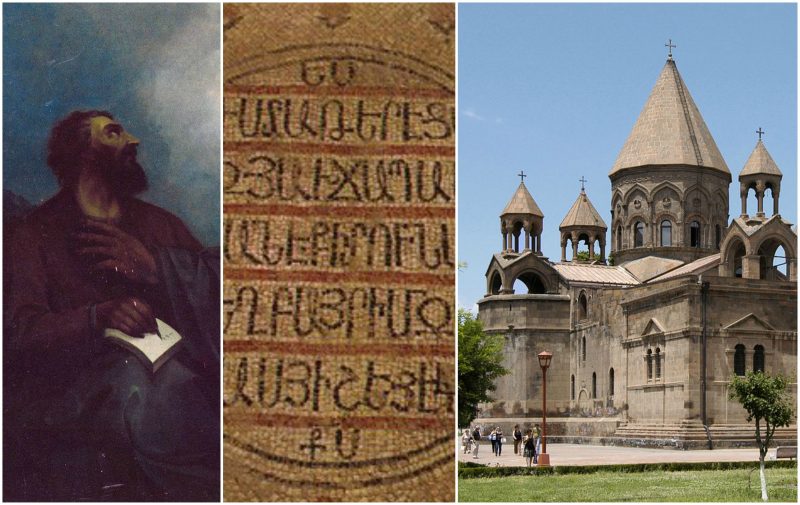One of the greatest Armenian linguists and theologians, Mesrop Mashtot, was born around 361 A.D. at Hatsekats (Hatsik) settlement in the Province of Taron, as the gifted son of Vartan of the noble family, Mamikonians. Coming from a wealthy family, he received proper education from the patriarch Nerses I and learned to speak Greek, Persian and Syrian.
Accounts and stories of his life are written by his student and biographer, Koryun. Being well read and educated, he was a secretary to King Chosroes (Khosrov) IV, translating and writing edicts and laws for the King. However, around the year 395, he dedicated himself to the service of God.
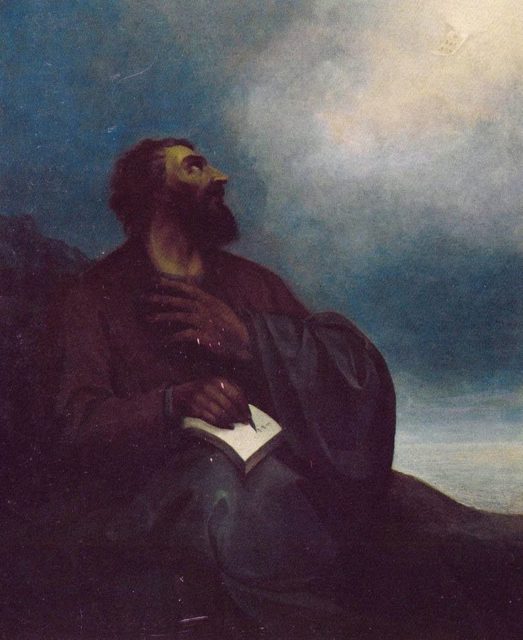
Isolating himself in an old monastery, he began to practice harsh religious zeals, observing long lent and living in poverty. Believing that this piety was necessary to prepare himself for the holy service, he thoroughly analyzed the Holy Scripture and thought that the Armenian people needed an accessible, practical, and unique alphabet to read the Holy Bible.
Mesrop Mashtots’ greatest achievement was inventing and systematizing the Armenian alphabet, introducing 36 letters in 405, with the help of Isaac the Great. He used the pattern of the Greek alphabet as an example, and they were greatly aided by King Vramshapuh (who was the successor of King Chosroes IV) in their endeavor.
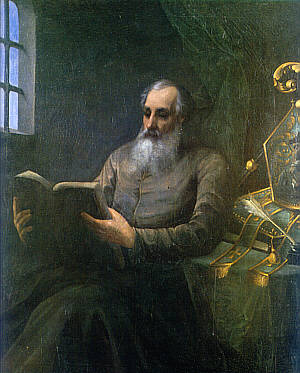
There are also claims that, at this time, the Caucasian Albanian and Georgian was also introduced by Mesrop Mashtots. He was ordained as a priest and founded many monasteries to teach the newfound alphabet and spread the word of God through Gospels while rejecting the Zoroastrianism religion.
The alphabet was firstly used to translate the Mesropian Bible (c. 410), which was in Greek, and he himself revised the entire scripture. He translated the Hebrew Bible, along with the Old and the New Testament, and afterward, he sent his missionaries and students in Constantinople, Rome, Alexandria, Edessa, and Antioch, to find biblical manuscripts that were needed for translating.
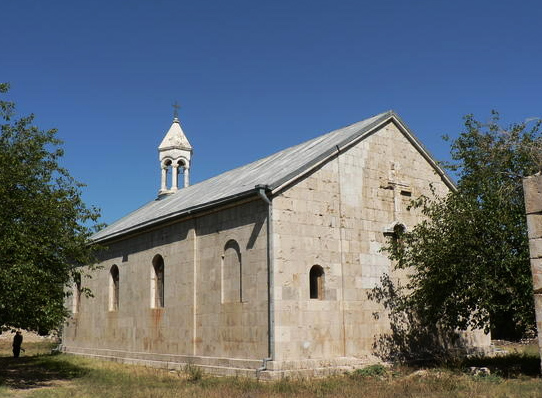
He and his scholars translated and wrote so many texts, manuscripts, and hymns, that they are regarded as the key figures of setting the cornerstone of the Armenian Church and language. Armenia formerly lost its independence in 387 through many bloody wars between Romans and Persians and was torn apart between Byzantium and Persia.
Thus, Mashtots was determined not only to conduct the Holy service of God but also to define the national spirit of his people and the already readjusted Armenian state by having their own recognizable alphabet. It is said that the first sentence ever translated by the new alphabet was an excerpt of Solomon’s Book of Proverbs: “To know wisdom and instruction; to perceive the words of understanding.”

There’s a variety of the Armenian language like the old Armenian, also called “Grabar,” Middle Armenian, and “Ashkharhabar,” the modern equivalent, which is divided into Western and Eastern Armenian. More than 40 dialects existed until the Armenian Genocide, the massacre of more than 1.5 million Armenian people by the Turkish government. Among other things, the genocide eradicated the rich culture, dialects, and accents the population spoke.
The Armenian language is also known as “Haieren,” and it belongs to the branch of the Indo-European family. Four principal calligraphic templates of the script were used. “Erkatagir” or ironclad letters, which was Mesrop’s original lettering, “Bolorgir,” the cursive font, “Notrgir,” or minuscule, which was used for speed writing, and “Sheghagir,” which is today’s most used font.
Adding to the unique structure of the Armenian language, it also has its unique punctuation. The full stop is depicted as a colon, and oddly enough, the question mark is placed just above the word in question, marking emphasis in long sentences.
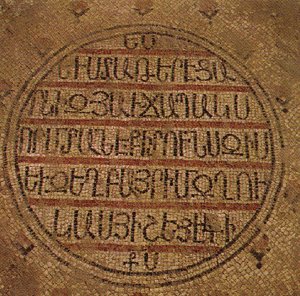
After the death of his friend and mentor Isaac in 440, he took care of the Patriarchate and Church and continued to teach his students and write. Mesrop Mashtots survived Isaac by only six months. He died on February 17th, 440 AD and was venerated as a patron saint of teaching in Armenia.
His grave is located at a chapel in Oshakan, a village which is 8 km away from the town of Ashtarak. The Armenians celebrate him on 19th of February.
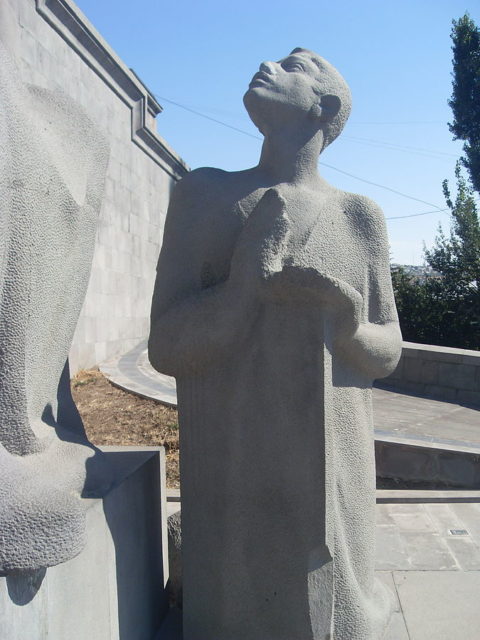
He did so much more than just spreading the Christian religion to the pagan, Zoroaster folk in Armenia. Many historical works and manuscripts of science, philosophy, theology, literature and cultural art were translated and published, marking a golden era in Armenia’s history.
There is a major road in Yerevan, the capital of Armenia, that is named in his honor. Matenadaran, the national repository of his manuscripts, is conveniently located at the end of the street and it serves as research institute and museum. Not to mention the countless statues and monuments in schools, museums and cultural centers that commemorate his historical attainment.
